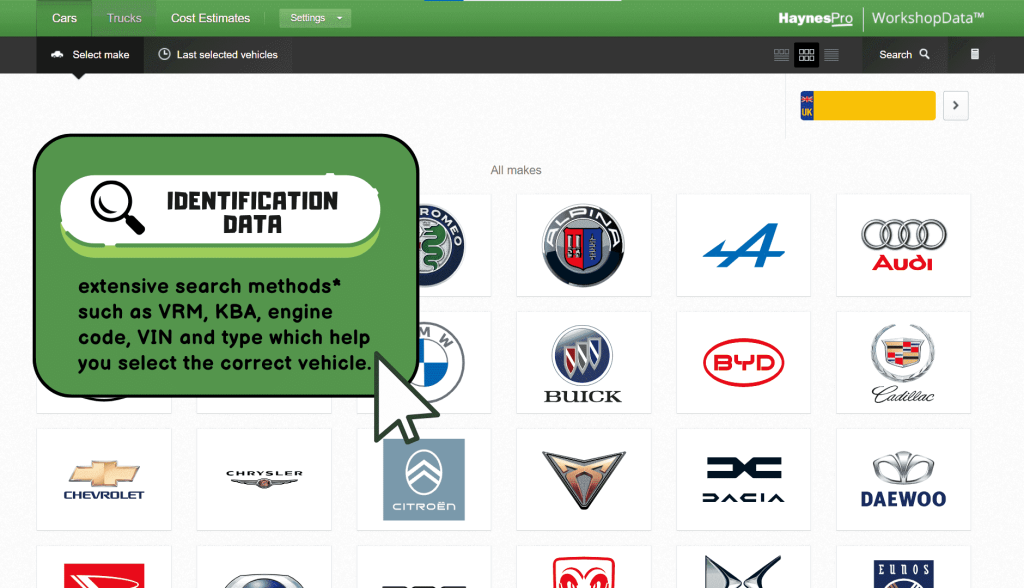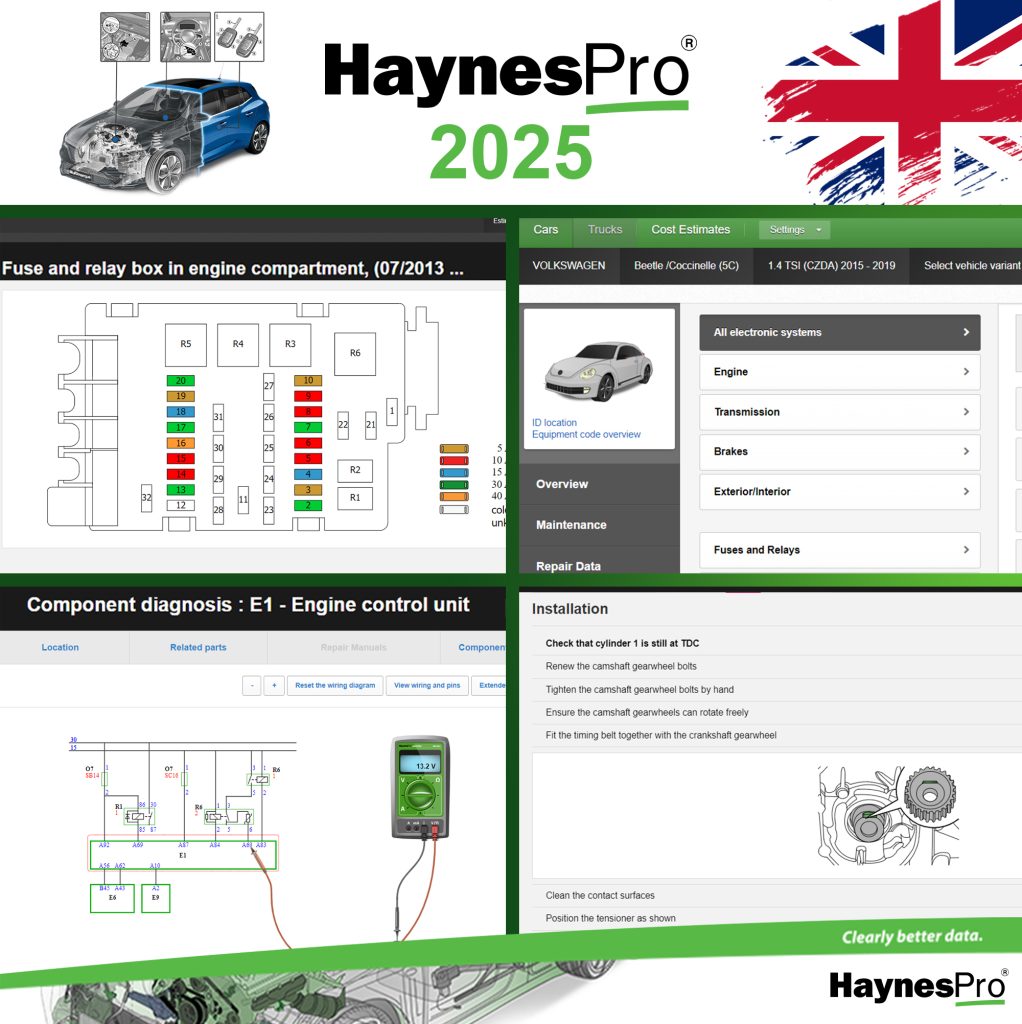In the world of automotive diagnostics, wiring diagrams have been a vital tool for decades. They map out the electrical systems of a vehicle, showing how each component connects to others through wires, relays, and fuses. But as vehicles have evolved, becoming complex networks of digital communications, sensors, and ECUs, traditional wiring diagrams have started to show their limits.
HaynesPro’s VESA (Vehicle Electronics Smart Assistant) takes diagnostics beyond static diagrams — into an interactive, intelligent, real-time solution. Let’s dive into why relying on wiring diagrams alone can leave you stuck — and how VESA can supercharge your workshop’s efficiency and accuracy.
1. Complexity Has Exploded: Modern Vehicles Are Digital Ecosystems
The Problem:
Think back 20 years ago: a vehicle might have had 5 or 6 ECUs. Today, the average car has 70 to 100 interconnected modules communicating over multiple bus systems (CAN, LIN, FlexRay, Ethernet). Each system — ABS, HVAC, ADAS, infotainment — operates semi-independently yet relies on shared signals and sensors.
In a real diagnostic case, tracing a fault across this web using only static wiring diagrams:
- Takes hours of manual tracing
- Increases the risk of human error
- Often leads to replacing unnecessary parts
How VESA Changes It:
VESA isn’t just a static map. It analyzes faults, symptoms, and real-time inputs to build guided diagnostic paths — taking into account:
- System interdependencies
- Communication networks
- Most probable causes
With VESA, technicians move from “Where does this wire go?” to “Here’s exactly where to test and what to expect.”
See how VESA simplifies complexity: Start a 7-day free trial now and experience intelligent diagnostics firsthand.
2. Traditional Diagrams Consume Time (and Time is Money)
The Problem:
Reading and interpreting wiring diagrams is a skill — but even the best technician:
- Spends time mentally “translating” diagrams into real-world testing steps
- Cross-references multiple diagrams when several systems interact
- Risks missing critical paths (especially on multiplexed networks)
Let’s be honest: time spent flipping pages or scrolling diagrams doesn’t earn you money.
How VESA Changes It:
VESA’s smart interface transforms raw diagrams into actionable steps:
- Presents diagnostic flows visually and logically
- Highlights relevant circuits and components dynamically
- Provides direct links to test procedures and values
Instead of guesswork or jumping between pages, VESA acts like your digital co-pilot — guiding every click and every test.
You want more info on how wiring diagrams can transform your workflow?
👉 Check out our blog post on The Power of Wiring Diagrams.
Don’t let complicated wiring cost you profits. Start a 7-day free trial and watch your diagnostic time shrink dramatically.
3. Dynamic Fault Analysis > Static Diagrams
The Problem:
Wiring diagrams are static. They don’t change based on symptoms, error codes, or system behaviors.
You, the technician, must:
- Interpret error codes
- Mentally map them to circuits
- Decide testing priorities manually
This invites inconsistency — especially in fast-paced shops or among less experienced techs.
How VESA Changes It:
VESA adapts to live conditions:
- Enter a fault code, and VESA maps it to known root causes
- It creates dynamic troubleshooting flows specific to that fault and vehicle
- Each diagnostic path updates based on test results — no static guessing
It’s like having an experienced master technician inside your laptop.
Get hands-on with VESA’s smart fault analysis with a free 7-day trial — no credit card needed.
Need more details? Our pricing page offers flexible plans for workshops of all sizes.
4. Technical Service Bulletins (TSBs): The Invisible Time Saver
The Problem:
You could spend hours diagnosing an issue, only to discover it’s a known manufacturer defect — easily fixed with:
- A software update
- A redesigned connector
- A simple reflash
Traditional wiring diagrams won’t tell you this. Technicians lose precious time chasing non-existent faults.
How VESA Changes It:
When you enter a fault or symptom in VESA:
- It automatically checks OEM TSBs
- It flags any known fixes instantly
- It integrates TSB procedures directly into the repair flow
This means:
- Faster resolution
- Fewer unnecessary parts ordered
- Happier customers who see you as efficient experts
Never waste hours again. Try HaynesPro VESA’s integrated TSB lookup free for 7 days!
5. From Diagnosis to Complete Repair Plans
The Problem:
Once you figure out the fault, the real work begins:
- Ordering parts
- Planning technician workloads
Using traditional wiring diagrams only gets you halfway there.
How VESA Changes It:
VESA builds full repair plans based on diagnostics:
- Lists relevant parts
- Provides step-by-step verified repair instructions
This allows you to:
- Quote jobs accurately
- Order parts efficiently
- Dispatch work orders smoothly
Get end-to-end workflow automation today: Start your 7-day free trial with VESA.
And when you’re ready to commit, visit our pricing page for competitive subscription packages.
Final Thoughts: Stop Settling for “Good Enough”
Wiring diagrams are useful — but they are only a starting point. Today’s vehicles demand faster, smarter, data-driven diagnostics.
HaynesPro’s VESA turns complex systems into simple solutions, helping workshops:
- Cut diagnostic time by up to 50%
- Boost first-time fix rates
- Increase customer satisfaction (and profitability)
Join hundreds of modern workshops upgrading their diagnostic workflow. Start your free 7-day trial of HaynesPro today.
No obligations. No surprises. Just faster, smarter repairs.








